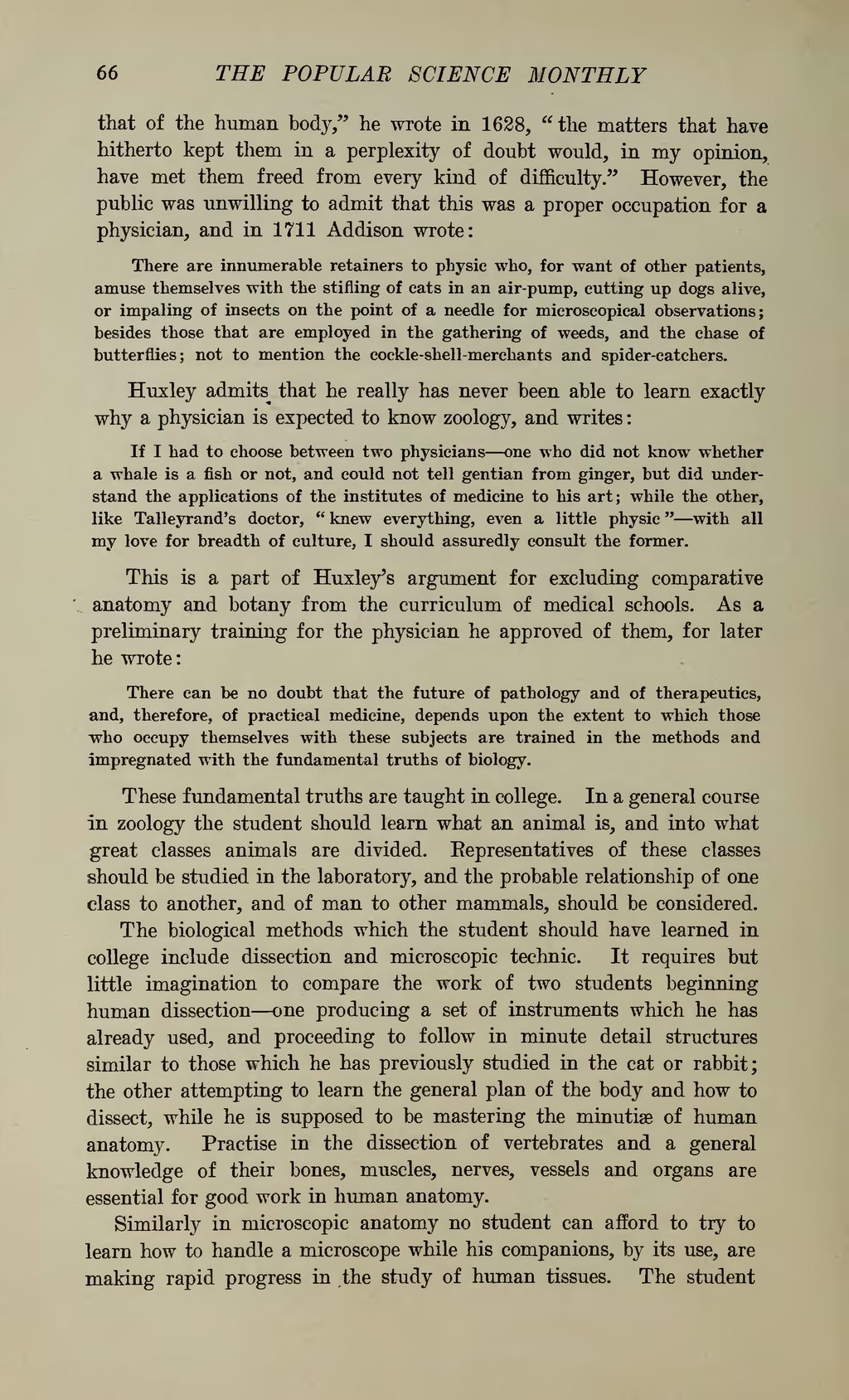that of the human body," he wrote in 1628, "the matters that have hitherto kept them in a perplexity of doubt would, in my opinion, have met them freed from every kind of difficulty." However, the public was unwilling to admit that this was a proper occupation for a physician, and in 1711 Addison wrote:
There are innumerable retainers to physic who, for want of other patients, amuse themselves with the stifling of cats in an air-pump, cutting up dogs alive, or impaling of insects on the point of a needle for microscopical observations; besides those that are employed in the gathering of weeds, and the chase of butterflies; not to mention the cockle-shell-merchants and spider-catchers.
Huxley admits that he really has never been able to learn exactly why a physician is expected to know zoology, and writes:
If I had to choose between two physicians—one who did not know whether a whale is a fish or not, and could not tell gentian from ginger, but did understand the applications of the institutes of medicine to his art; while the other, like Talleyrand's doctor, "knew everything, even a little physic"—with all my love for breadth of culture, I should assuredly consult the former.
This is a part of Huxley's argument for excluding comparative anatomy and botany from the curriculum of medical schools. As a preliminary training for the physician he approved of them, for later he wrote:
There can be no doubt that the future of pathology and of therapeutics, and, therefore, of practical medicine, depends upon the extent to which those who occupy themselves with these subjects are trained in the methods and impregnated with the fundamental truths of biology.
These fundamental truths are taught in college. In a general course in zoology the student should learn what an animal is, and into what great classes animals are divided. Representatives of these classes should be studied in the laboratory, and the probable relationship of one class to another, and of man to other mammals, should be considered.
The biological methods which the student should have learned in college include dissection and microscopic technic. It requires but little imagination to compare the work of two students beginning human dissection—one producing a set of instruments which he has already used, and proceeding to follow in minute detail structures similar to those which he has previously studied in the cat or rabbit; the other attempting to learn the general plan of the body and how to dissect, while he is supposed to be mastering the minutiae of human anatomy. Practise in the dissection of vertebrates and a general knowledge of their bones, muscles, nerves, vessels and organs are essential for good work in human anatomy.
Similarly in microscopic anatomy no student can afford to try to learn how to handle a microscope while his companions, by its use, are making rapid progress in the study of human tissues. The student
